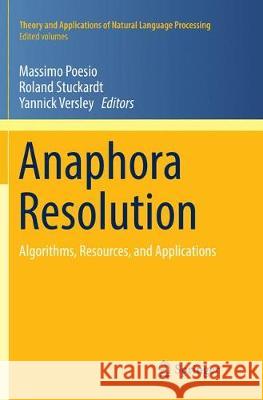Anaphora Resolution: Algorithms, Resources, and Applications » książka
topmenu
Anaphora Resolution: Algorithms, Resources, and Applications
ISBN-13: 9783662569078 / Angielski / Miękka / 2018 / 508 str.
Kategorie:
Kategorie BISAC:
Wydawca:
Springer
Seria wydawnicza:
Język:
Angielski
ISBN-13:
9783662569078
Rok wydania:
2018
Wydanie:
Softcover Repri
Ilość stron:
508
Waga:
0.72 kg
Wymiary:
23.39 x 15.6 x 2.67
Oprawa:
Miękka
Wolumenów:
01
Dodatkowe informacje:
Komentarz
Wydanie ilustrowane
Wydanie ilustrowane











